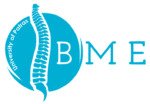| Code | B3 |
| Type | Compulsory |
| Semester | B |
| ECTS credits | 6 |
Aims & Objectives
To introduce students to the different techniques used for the acquisition, processing and storage of medical images for the purpose of diagnostic and treatment of patients.
To provide knowledge about different medical imaging modalities such as radiographic imaging, nuclear medicine, magnetic resonance and ultrasound.
To bring students to understanding of the operation of the instrumentation utilized in various imaging modalities.
Learning outcomes & Competences
The students will be able to:
Identify, manipulate and process medical images.
Visualize and analyze different types of medical imaging signals.
Describe the principle of operation and applications of medical imaging systems.
Describe key modalities in radiographic imaging, including generation and detection of ionizing radiation and its effects on human body.
Describe the principle of projection radiography systems, including X-ray and fluoroscopy systems.
Explain the concept of image reconstruction in medical imaging, including Computed Tomography (CT) products.
Describe the principles of radioisotope imaging, including planar scintigraphy, Single Photon Emission Computed Tomography (SPECT) and Positron Emission Tomography (PET).
Describe the principle of nuclear magnetic resonance.
Explain what ultrasound is and how ultrasound image is formed.
Explain the choice of a specific medical imaging system based on medical application (advantages and disadvantages of a specific imaging modality with respect to the others).
Identify the basic image processing and analysis techniques that need to be applied to a specific problem.
Devise a sequence of processing and analysis steps to achieve a certain goal.
Prerequisites
Applied Mathematics for Engineers
Physics for Engineers
MATLAB
Signal Processing
Content
Introduction to medical imaging: medical imaging objectives; common medical imaging systems (X-ray, CT or CAT, PET, SPECT, ultrasound, MRI)
Medical imaging system (MIS), Image communication and archiving; Image quality: contrast; modulation, modulation transfer function; resolution; noise; signal to noise ratio (SNR); non random effect, artifacts; distortion; accuracy. Basic 2-D signals and systems. Transforms.
Electromagnetic spectrum: X-radiography; computed tomography; nuclear imaging (SPECT, PET).
Introduction to radiography: ionization; forms of ionizing radiation; nature and properties; attenuation of electromagnetic radiation; radiation dosimetry. Projection radiography: instrumentation (X-ray tubes, filtration and restriction; X-ray image intensifier); noise; scattering.
Computed tomography: instrumentation; image formation; Radon transform; image reconstruction from projections (back projection; filtered back projection; algebraic reconstruction techniques); image quality.
Nuclear medicine: instrumentation (collimators, scintillation crystal, photomultiplier tubes, image capture); image formation; image quality; planar scintigraphy; single photon emission computed tomography (SPECT); positron emission tomography (PET)
Physics of ultrasound: wave equation; wave propagation; Doppler effect; beam pattern formation and focusing. Ultrasound imaging system: ultrasound instrumentation (transducer, probes); ultrasound imaging modes; steering and focusing; three dimensional ultrasound imaging.
Physics of magnetic resonance imaging (MRI): nuclear magnetism; spin; Larmor frequency; RF excitations; resonance condition; free precession and relaxation.
Magnetic resonance imaging system: instrumentation (main magnet, gradient system, RF system); image reconstruction; image quality.
Image formation, methods of analysis, and representation of digital images.
Measures of qualitative performance in the context of clinical imaging.
Algorithms fundamental to the construction of medical images via methods of computed tomography, magnetic resonance, and ultrasound.
Algorithms and methods for the enhancement and quantification of specific features of clinical importance in each of these modalities.
Recommended reading / Bibliography
Nadine Barrie Smith , Andrew Webb, “Introduction to Medical Imaging: Physics,
Engineering and Clinical Applications”, Cambridge Texts in Biomedical Engineering,2010.
Jerry L. Prince, Jonathan Links, “Medical Imaging Signals and Systems”, (2nd Edition), 2014.
Z-H. Cho, J. Jones and M. Singh, “Foundations of Medical Imaging”, John Wiley 1993.
Charles L. Epstein, Introduction to the Mathematics of Medical Imaging, Second Edition, SIAM, 2007.
Teaching and learning methods
Lectures, laboratory exercises, homeworks
Assessment
Final Exam (30% of final grade)
Homework assignments (30% of final grade)
Project assignment (40% of final grade)
